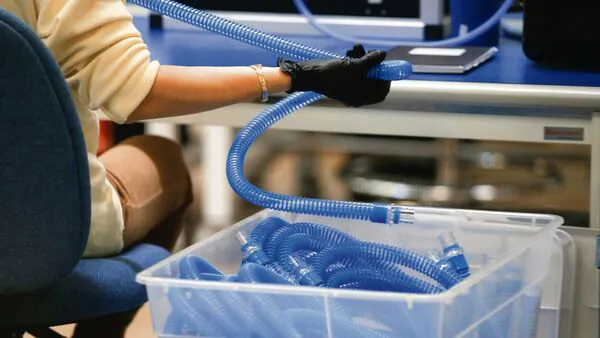
Standards Upgrade: India Targets Safer, Globally Accepted Medical Devices
New Delhi: India is set to overhaul standards for medical devices, strengthening the regulatory framework for the country's $12-billion market and aligning with US, Japanese, and European Union (EU) quality benchmarks.
The Indian Pharmacopoeia Commission (IPC), an autonomous body under the ministry of health and family welfare, will create the standards for medical devices for the first time, in partnership with the Bureau of Indian Standards (BIS), according to documents reviewed by Mint and officials familiar with the matter. Historically, the IPC has focused on evolving standards for medicines, but has now widened its mandate to include medical devices as well.
The IPC has already started auditing medical device companies and is developing monographs, which will outline standards and specifications for medical equipment. The aim is to strengthen India's global reputation for medical devices manufacturing, and bolster exports.
Also Read | National Medical Commission approves 6,850 new MBBS seats for 2025-2The National Medical Devices Policy, 2023, also emphasizes that Indian standards bodies progressively broaden their standards for products, processes, wireless technologies and performance. This will help the local industry become globally competitive and achieve the goal of adopting more Indian standards for medical devices. The policy aims to grow India's medical devices market size to $50 billion by 2030, and capture 10-12% of the global market share in 25 years.
Currently, there are around 1,500 standards for different medical device products in India as approved by BIS.
Working together for global recognitionAccording to the documents, at a recent meeting, the scientific body of the IPC discussed upgrading standards for medical devices and has decided to work closely with the BIS to avoid creating duplicate standards.
Additionally, the IPC is establishing its own medical device testing laboratory. It has recommended that its newly-created Medical Device Division carefully plan the scope of testing to align with the current infrastructure, facilities, and expertise available. This will ensure that their efforts are both effective and efficient.
Also Read | Mint Explainer | What India's ₹5,000 crore pharma R&D scheme mean“Creating standards isn't the difficult part. The most crucial task right now is to harmonize Indian medical device standards with global ones. Once Indian standards are globally accepted, the country can require exporting nations to follow them. The ultimate goal of the IPC and BIS is to ensure the quality and safety of medical devices while meeting international benchmarks," one of the persons cited earlier said.
Queries sent to the health ministry remained unanswered.
Himanshu Baid, managing director, Polymedicure Ltd, said that the IPC taking the lead in formulating monographs for medical devices is a timely and progressive step.“As India's MedTech sector continues to grow rapidly, with a market size projected to reach $50 billion..., establishing clear, indigenous standards is essential for ensuring quality, safety, and global competitiveness. The collaboration between IPC and the BIS will help harmonize regulatory frameworks and avoid duplication, ultimately benefiting patients and industry stakeholders alike," Baid added.
The scientific body also reviewed the progress of the Materiovigilance Programme of India (MvPI), which monitors the safety of medical devices.
India imports 60-70% of its medical devices . Once Indian standards are globally accepted, the country can require exporting nations to follow them, the person said.
Also Read | What India's ban on livestock antibiotics means for human drug resistanc Growth and regulation in India's medical device sectorIndia's medical device market is currently valued at approximately $12 billion and is projected to grow to $50 billion by 2030. This growth is supported by regulations under the Medical Device Rules, 2017, which require the Central Licensing Authority to classify medical devices based on risk. The Central Licensing Authority functions under the Central Drugs Standard Control Organization (CDSCO) , which is the top regulatory authority for drugs and medical devices in India.
The sector is quite diverse, with devices broadly classified into five categories: electronic equipment, implants, consumables and disposables, surgical instruments, and in-vitro diagnostic reagents.
The CDSCO categorizes medical devices into four risk-based classes: Low-risk devices like bandages and cotton swabs (Class A); low-to-moderate-risk devices like thermometers (Class B); moderate-to-high-risk devices like nebulizers and X-ray machines (Class C); high-risk devices such as defibrillators and implants (Class D).
Legal Disclaimer:
MENAFN provides the
information “as is” without warranty of any kind. We do not accept
any responsibility or liability for the accuracy, content, images,
videos, licenses, completeness, legality, or reliability of the information
contained in this article. If you have any complaints or copyright
issues related to this article, kindly contact the provider above.


















Comments
No comment